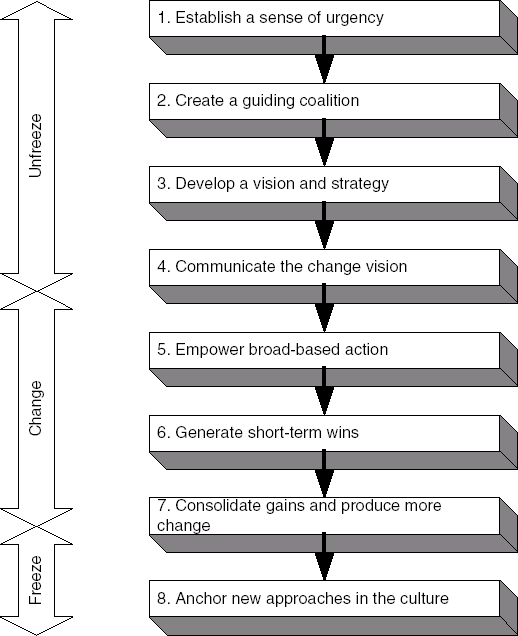8.4. Kotter's Model of Change
Kotter's model[] differs from the previous models in that it describes an action plan for bringing about change. Essentially, Kotter has enlarged Lewin's three-part model into eight distinct actions and phases to be undertaken to bring about change (Figure 8.4).
[] See Kotter (1996).
As with Satir's model, the diagram effectively describes what the model is about.
Kotter starts by suggesting that change won't happen unless there's some sense of urgency. Without this, he suggests that change will happen too slowly to be effective, nor will there be any real drive to action the change programme. While creating the urgency itself may be done by a single person (assumed to be a senior manager) or a small team, the change programme need to be managed by a coalition.
Figure 8.4. Kotter's eight-stage model for creating major change. Reprinted by permission of Harvard Business School Press. From Leading Change by John P. Kotter. Boston, MA, 1996, p. 21. Copyright © 1996 by the Harvard Business School Publishing Corporation; all rights reserved.

Only when the urgency has been established and the coalition formed does the model actually consider what changes should be made. The implication is that the sense of urgency and coalition is built around the problem rather than the solution.
In practical terms, this means that software teams should not start their ...
Get Changing Software Development: Learning to Become Agile now with the O’Reilly learning platform.
O’Reilly members experience books, live events, courses curated by job role, and more from O’Reilly and nearly 200 top publishers.

